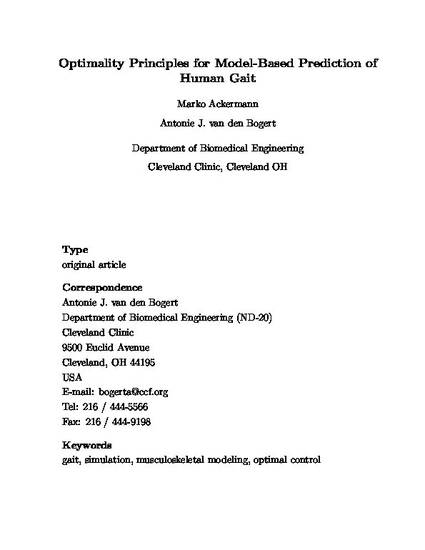
Although humans have a large repertoire of potential movements, gait patterns tend to be stereotypical and appear to be selected according to optimality principles such as minimal energy. When applied to dynamic musculoskeletal models such optimality principles might be used to predict how a patient's gait adapts to mechanical interventions such as prosthetic devices or surgery. In this paper we study the effects of different performance criteria on predicted gait patterns using a 2D musculoskeletal model. The associated optimal control problem for a family of different cost functions was solved utilizing the direct collocation method. It was found that fatigue-like cost functions produced realistic gait, with stance phase knee flexion, as opposed to energy-related cost functions which avoided knee flexion during the stance phase. We conclude that fatigue minimization may be one of the primary optimality principles governing human gait.

This study is supported by the NIH Grant R01EB006735 and NSF Grant BES0302259.